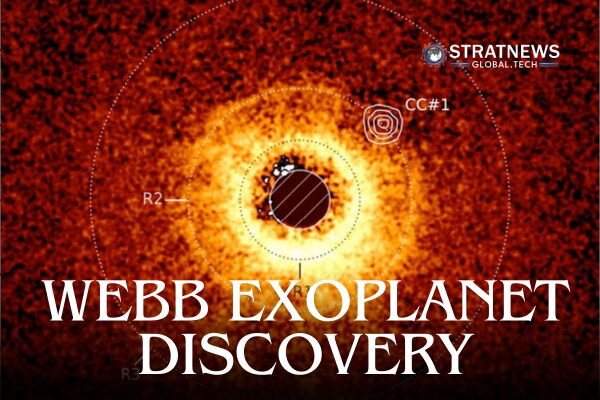A New Milestone for the James Webb Space Telescope
Since its launch in 2021, the James Webb Space Telescope has been gathering key data about the early universe and known exoplanets—planets outside our solar system. Now, it has achieved a new milestone by discovering an exoplanet not previously known.
This young gas giant is similar in size to Saturn, the second-largest planet in our solar system. It orbits a small star around 110 light-years away from Earth in the constellation Antlia. A light-year is the distance light travels in one year—about 5.9 trillion miles or 9.5 trillion kilometres.
How Webb Telescope Made the Discovery
Most of the 5,900 known exoplanets have been found using indirect methods, like the transit method. This involves watching a star’s brightness dim slightly when a planet passes in front of it. However, fewer than 2% of these exoplanets have been directly imaged. Webb’s discovery stands out as it used direct imaging to spot this planet.
The newly found planet is the smallest ever to be directly imaged. It is about 10 times less massive than the previous lightest planet detected this way. This highlights the powerful sensitivity of Webb’s instruments. The telescope used a French-built coronagraph to block out the star’s light. This device was part of Webb’s Mid-Infrared Instrument (MIRI).
What This Planet Reveals
The planet orbits its host star, TWA 7, at a distance 52 times farther than Earth is from the sun. In comparison, Neptune, our outermost planet, is only 30 times that distance from the sun. Because this planet is so far from its star, it could not have been found using traditional methods.
Astronomer Anne-Marie Lagrange, who led the study published in Nature, explained that Webb is revealing new types of planets and systems previously hidden from view. This will help scientists understand how planetary systems form and change.
Both the star and the planet are very young—only around 6 million years old. That’s much younger than our sun and solar system, which are about 4.5 billion years old. Thanks to the viewing angle, researchers also spotted the structure of the surrounding disk. It includes two wide ring-shaped regions filled with dust and rocks, plus a narrow ring where the planet sits.
Future Possibilities in Space Exploration
The planet’s atmosphere remains unknown, but future Webb studies may uncover its details. Scientists also do not yet know whether the planet is still growing by pulling in material from its surroundings.
While this planet is large compared to Earth, it is still too big to be considered a strong candidate in the search for life. Webb currently lacks the ability to directly image small, rocky planets like Earth. However, Lagrange hopes that, in time, projects aiming to directly image Earth-like worlds and search for life will come true.
with inputs from Reuters


